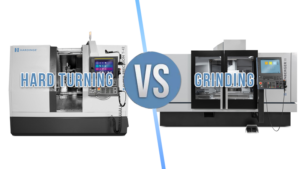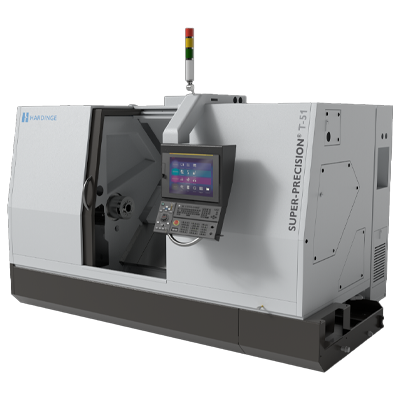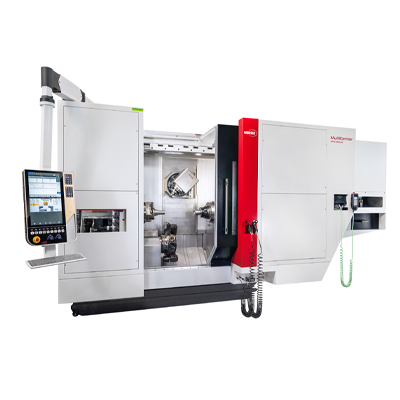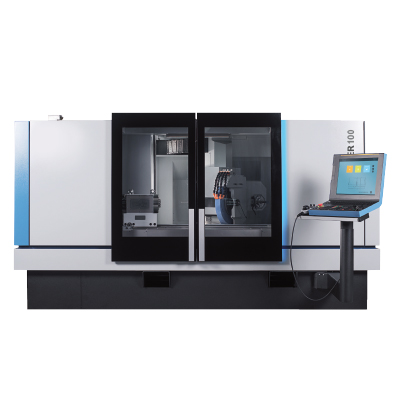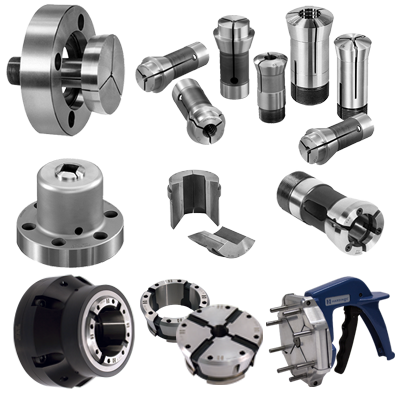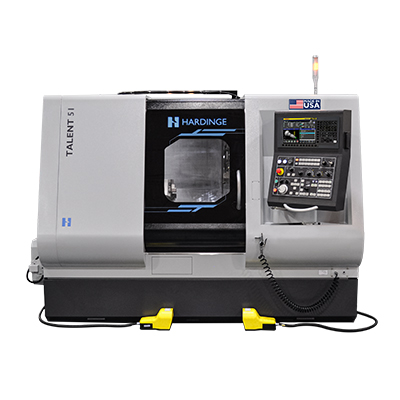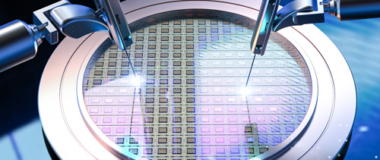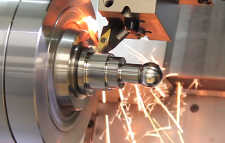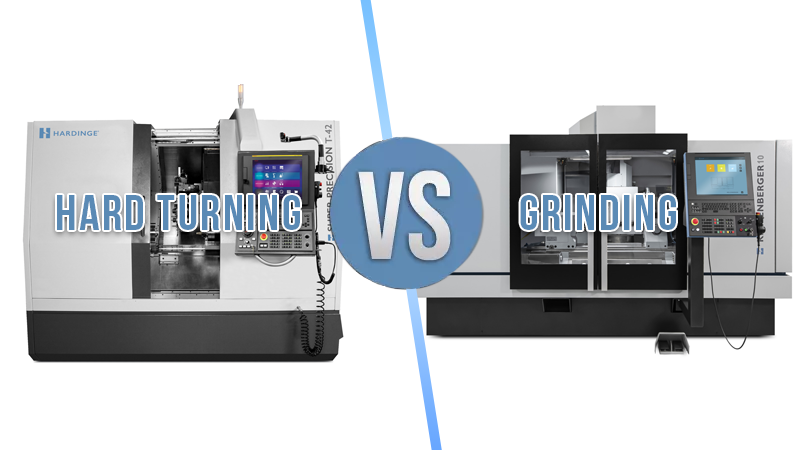In manufacturing, “hard turning” and “grinding” refer to two different manufacturing processes used to finish machine workpieces made of various materials, particularly metals. Let’s explore each process and their respective advantages and applications:
HARD TURNING
Hard turning is a machining process used to machine and finish hardened materials, typically these components have a hardness above 45HRC (Rockwell C Hardness Scale). It is a turning operation conducted with single-point cutting tools, on a turning center, for materials that were previously heat-treated or have a naturally high hardness. The cutting tool removes material from the workpiece, creating the desired shape, tolerance, or surface finish.
Advantages of hard turning:
- Faster than traditional grinding: Hard turning is generally a 3x faster process as compared to grinding, making it more cost and time-efficient in many applications.
- Cost-effective: Hard turning eliminates the need for additional traditional grinding processes, reducing production costs.
- Environmentally friendly: It often times can eliminate coolant and grinding dust, leading to a cleaner working environment.
- Versatility: It can handle various workpiece sizes and shapes, offering flexibility in manufacturing.
- Reduced tooling costs: it utilizes standard off-the-shelf insert style tooling for generation of complex shapes eliminating the need for costly form grinding wheels.
- Manufacturing process flexibility: Often times the turning center can be used to machine the component in the green state prior to hardening and then utilizes the same turning machine for the hard turning operation to eliminate the grinding operations. Additionally multiple operations can be performed in a single setup on the turning center, again reducing or eliminating multiple grinding setups and operations which may have been used in the past.
We asked Tom Sheehy, Manager, Custom Applications at Hardinge his thoughts about the advantage of Hard Turning. He stated, “when applied correctly, Hard Turning offers numerous benefits vs grinding as mentioned. Hardinge is a world leader in hard turning and has over 30+ years of experience in this area. We work with our customers to achieve the desired results, as well as to educate them on the hard turning process from a technical aspect, including tooling, workholding and the theory behind hard turning. We welcome the opportunity to work with you on reducing your manufacturing costs utilizing the latest hard turning processes.”
Applications of hard turning:
- Hardened steel components like gears, shafts, and bearings.
- Automotive parts, such as CV joints and transmission components.
- Aerospace components like landing gear and turbine shafts.
- Precision machining of t. molds, tools and dies.
GRINDING
Grinding is a material removal process that uses an abrasive wheel as a cutting tool. The grinding wheel grinds away material from the workpiece’s surface, achieving tight tolerances and a smooth finish. Unlike hard turning, grinding is not limited to hardened materials and can also be used on softer metals and non-metallic materials.
Advantages of grinding:
- Precision and surface finish: Grinding can achieve very high levels of dimensional accuracy and surface finish, making it suitable for critical applications.
- Versatility: It can process a wide range of materials, from soft to hard, as well as non-metallic materials like ceramics and composites.
- Capability for complex shapes: Grinding can create intricate profiles and contours that might be challenging with other machining methods.
When we approached Matt Burton, who has had 11 years’ experience as a Grinding Service Technician prior to his new role as Technical Service Manager said, “grinding (abrasive machining) excels over hard turning when surface finish, size, and/or roundness is critical. With less geometric limitations, grinding offers a solution to machining/finishing complex workpieces. Grinding wheels are not affected by interrupted features such as keyways or splines. On a cost perspective, grinding wheels typically cost less per part than most other types of tooling. A diamond grit wheel can be dressed multiple times to expose fresh diamond grit before replacement is required.”
Applications of grinding:
- Finishing operations for hardened steel components after heat treatment.
- Precision grinding of cylindrical and flat surfaces.
- Sharpening cutting tools, such as drills and milling cutters.
- Surface grinding to achieve a high-quality finish on various materials.
In summary, hard turning and grinding are two distinct but complementary machining processes used in manufacturing. Hard turning is ideal for cutting hardened materials, offering speed and cost benefits, while grinding excels in achieving precision and superior surface finishes on various materials, including those that are not hardened. The choice between hard turning and grinding depends on the specific requirements of the workpiece and the desired outcome. Manufacturers often select the most suitable process based on factors such as material hardness, dimensional tolerances, surface finish requirements, and production volume.
